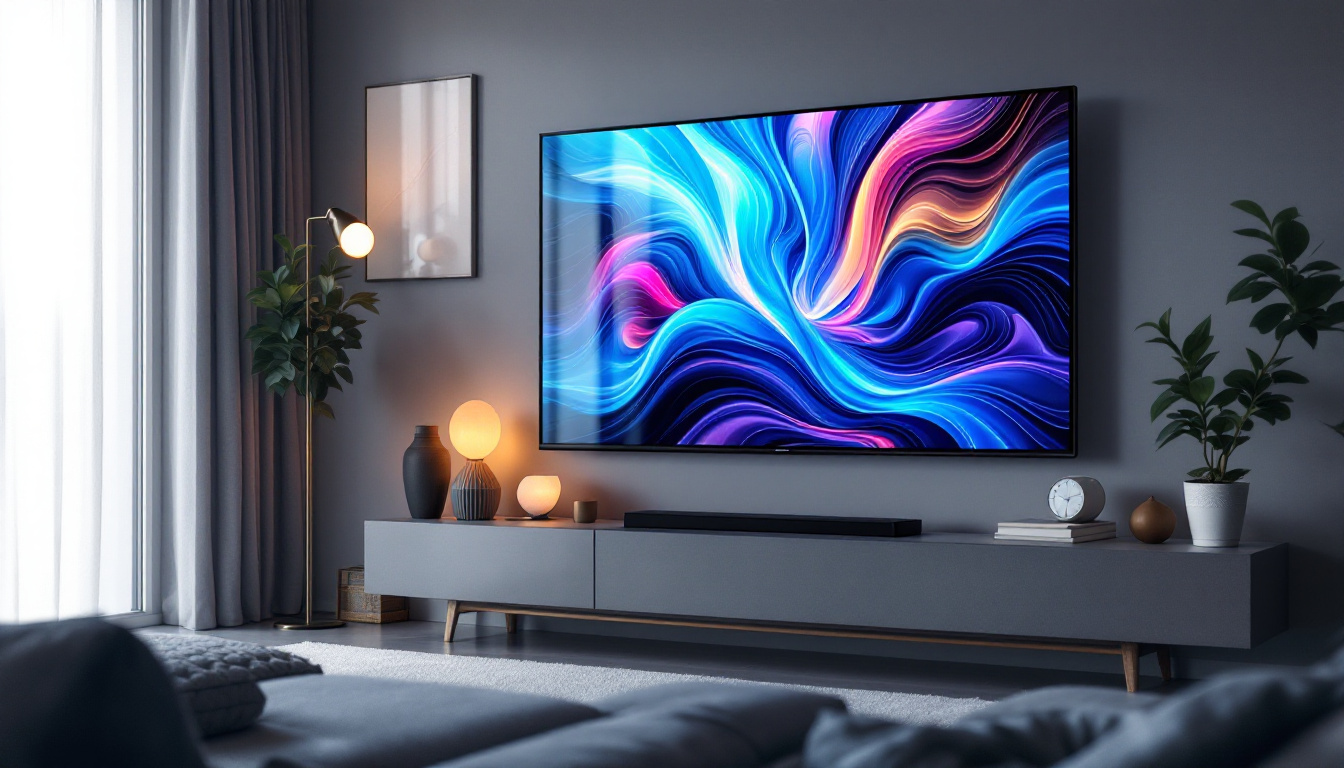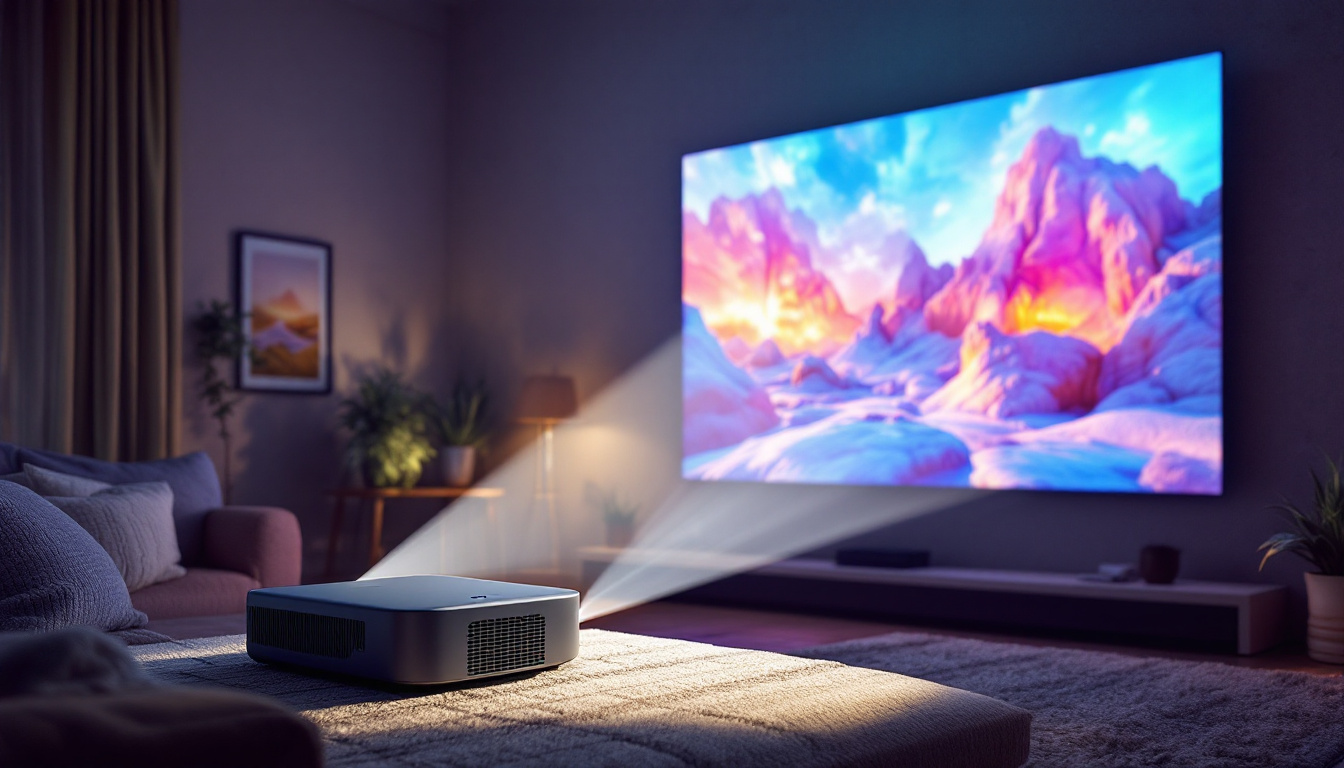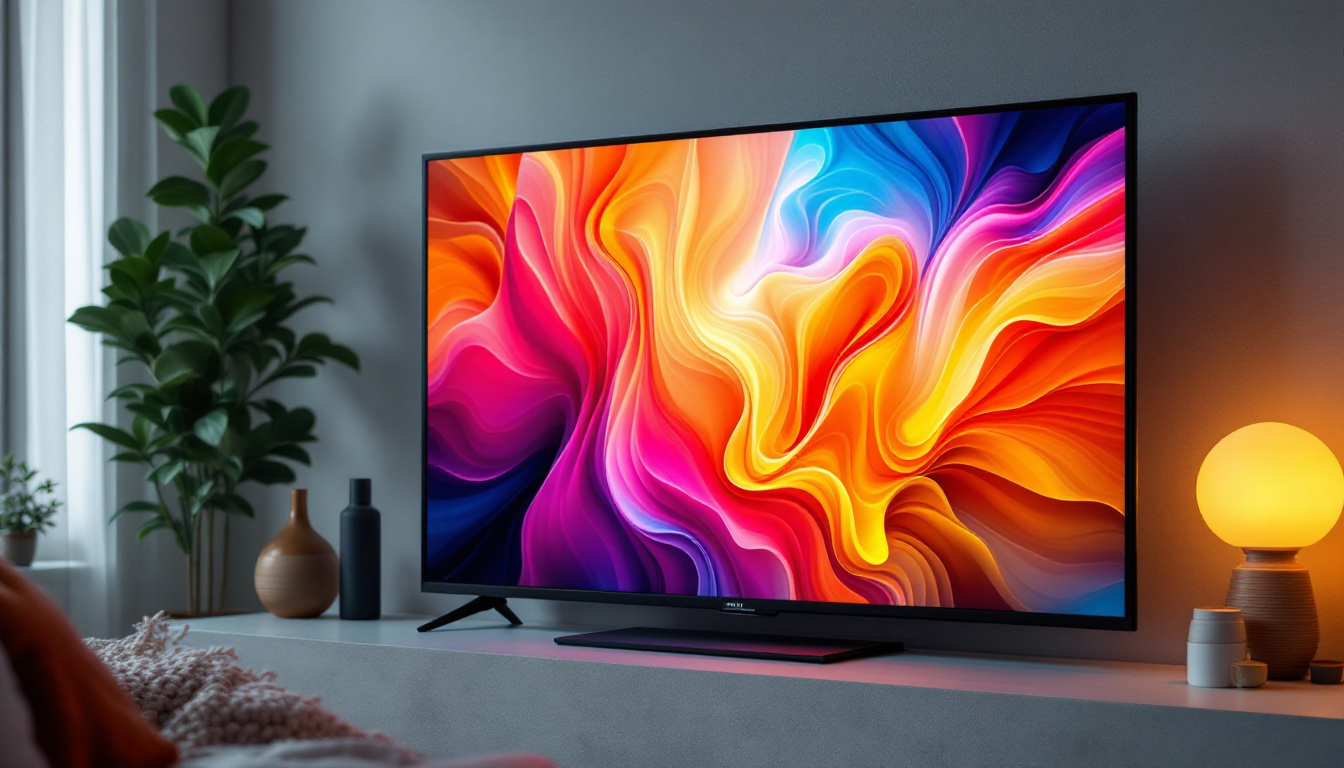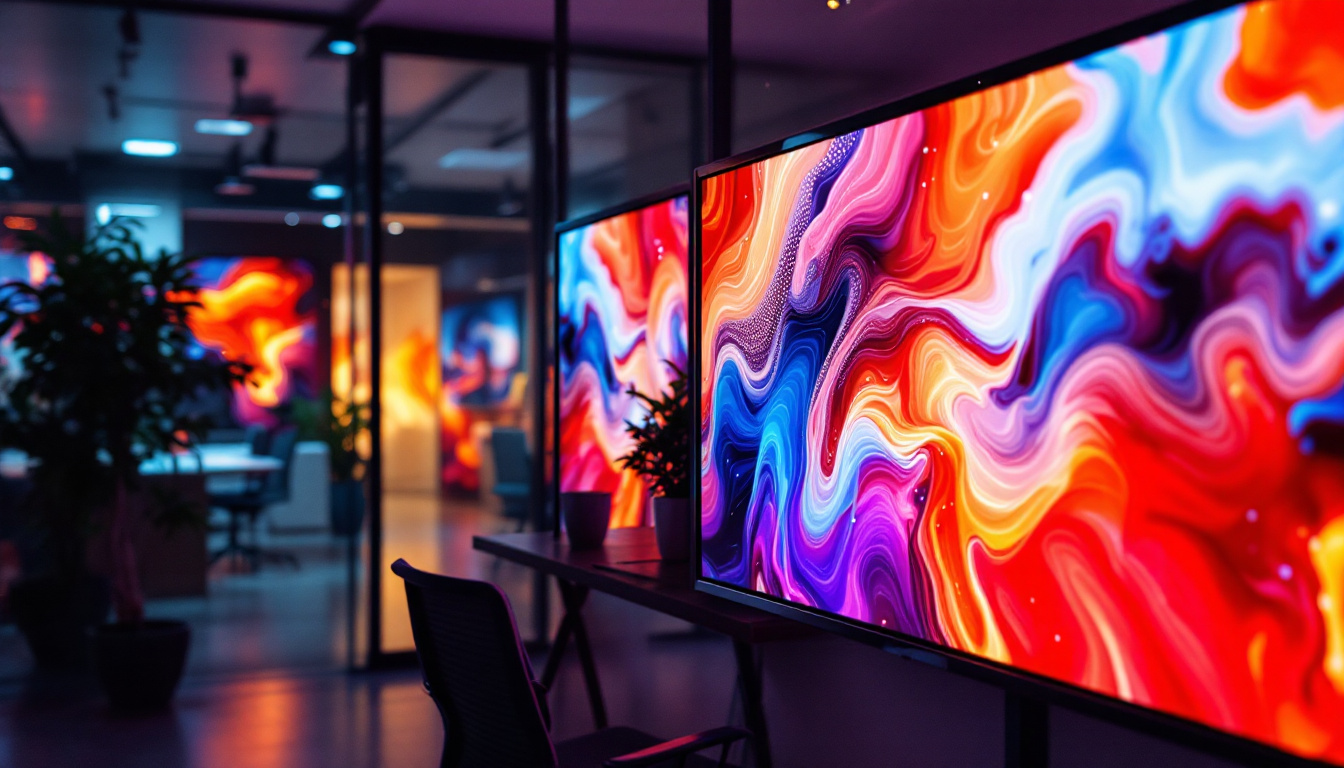Plasma TV 50 Inch: LED Display Explained
In the world of home entertainment, the choice of television technology can significantly impact the viewing experience. Among the various options available, Plasma TVs have carved a niche for themselves, particularly in the 50-inch category. This article delves into the intricacies of Plasma TVs, focusing on their LED display technology and how it influences performance and user experience.
Understanding Plasma Technology
Plasma technology has been a popular choice for large-screen televisions due to its ability to deliver vibrant colors and deep blacks. Unlike traditional LCDs, which rely on backlighting, Plasma screens consist of tiny gas-filled cells that emit light when electrically charged. This unique mechanism allows for exceptional contrast ratios and color accuracy. The technology has evolved significantly since its inception, and while it has faced competition from newer display technologies, such as OLED, it still holds a special place in the hearts of many enthusiasts who appreciate its distinctive visual qualities.
The Basics of Plasma Displays
At the heart of Plasma technology are the phosphor materials that glow when excited by electrical currents. Each pixel on a Plasma screen is made up of red, green, and blue subpixels, which combine to create a full-color image. This design enables Plasma TVs to produce stunning visuals, especially in darker scenes where the depth of black can enhance the overall picture quality. Furthermore, the uniformity of light emission across the screen contributes to a more immersive viewing experience, making it a favorite for movie nights and gaming sessions alike.
Advantages of Plasma TVs
One of the most notable advantages of Plasma TVs is their wide viewing angles. Unlike LCDs, which can suffer from color distortion when viewed from the side, Plasma displays maintain consistent color and brightness levels, making them ideal for large rooms where viewers may be seated at various angles. This feature is particularly advantageous for gatherings, where multiple viewers can enjoy the same high-quality picture without having to jockey for the best seat in the house.
Additionally, Plasma TVs generally have faster refresh rates, which reduces motion blur during fast-paced scenes. This feature is particularly beneficial for sports enthusiasts and action movie fans who crave a smooth viewing experience. The rapid response time of Plasma technology also means that fast-moving objects appear sharp and clear, enhancing the overall excitement of dynamic content. Beyond performance, Plasma TVs are often praised for their aesthetic appeal, with many models featuring sleek designs that complement modern home decor. The combination of visual excellence and stylish design makes Plasma televisions a compelling choice for those looking to elevate their home entertainment setup.
LED Technology: A Closer Look
While Plasma technology excels in certain areas, LED (Light Emitting Diode) technology has gained popularity for its energy efficiency and slim design. LED TVs are essentially LCDs that use LED backlighting instead of traditional fluorescent lights. This shift has led to improved picture quality and reduced power consumption. The advancements in LED technology have not only made televisions more accessible but have also paved the way for innovations in other display technologies, such as OLED and MicroLED, which further enhance the viewing experience.
How LED Backlighting Works
LED backlighting can be categorized into two main types: edge-lit and full-array. Edge-lit LEDs are positioned around the perimeter of the screen, providing illumination from the sides. This design allows for thinner screens but can result in uneven lighting, especially in darker scenes. Manufacturers have attempted to mitigate this issue through various techniques, such as using diffusion panels to spread the light more evenly across the screen, but some limitations remain.
Full-array LED backlighting, on the other hand, utilizes a grid of LEDs behind the entire screen. This configuration enables more precise control over brightness and contrast, allowing for localized dimming. As a result, full-array LED TVs can achieve deeper blacks and brighter whites, enhancing the overall viewing experience. Additionally, the technology has evolved to include features like HDR (High Dynamic Range), which further improves color accuracy and detail in both bright and dark scenes, making it a popular choice for cinephiles and gamers alike.
Comparing Plasma and LED Displays
When comparing Plasma and LED displays, several factors come into play. Plasma TVs are often favored for their superior color accuracy and contrast ratios, particularly in low-light conditions. However, they can be heavier and bulkier than their LED counterparts. The phosphor-based technology used in Plasma displays allows for richer colors and smoother motion, which can be particularly appealing for watching fast-paced sports or action films.
On the other hand, LED TVs offer a sleeker design and are typically more energy-efficient. They also tend to have a longer lifespan and are less prone to screen burn-in, a common issue with Plasma displays. This makes LED technology a more practical choice for many consumers. Furthermore, the increasing availability of smart features in LED TVs, such as built-in streaming services and voice control, has made them even more attractive. As technology continues to advance, the gap between these two types of displays narrows, but the unique characteristics of each still cater to different preferences and viewing habits.
Choosing the Right TV for Your Needs
When selecting a television, it’s essential to consider personal preferences and viewing habits. A 50-inch Plasma TV might be ideal for those who prioritize picture quality and immersive viewing experiences, especially in darker environments. However, for consumers looking for versatility and energy efficiency, an LED TV could be the better option.
Factors to Consider
Several factors should be taken into account when making a decision between Plasma and LED TVs. Room lighting plays a crucial role; if the viewing area is well-lit, an LED TV may outperform a Plasma in terms of brightness and visibility. Conversely, for dimly lit rooms, a Plasma TV’s ability to render deep blacks may provide a more enjoyable experience.
Additionally, consider the types of content you watch most frequently. Sports and fast-paced movies benefit from the motion handling capabilities of Plasma displays, while general television viewing may be perfectly suited for the clarity and energy efficiency of LED TVs. Furthermore, if you enjoy gaming, the refresh rates and response times of both types of TVs can significantly impact your experience. Many gamers prefer LED TVs for their lower input lag, which can be crucial during competitive play.
Budget Considerations
Budget is another critical factor in the decision-making process. Plasma TVs, while often offering superior picture quality, can be more expensive, especially for larger models. LED TVs, on the other hand, are available at a wider range of price points, making them accessible for various budgets.
It’s also worth noting that prices for Plasma TVs have decreased over time due to declining demand, which can make them an attractive option for those seeking high-quality visuals at a lower cost. However, it’s important to factor in potential long-term costs as well; LED TVs generally consume less power and may lead to savings on electricity bills over time. Additionally, consider the longevity of the TV. LED technology tends to have a longer lifespan than Plasma, which can be an important consideration for those looking to make a long-term investment in their home entertainment system.
The Future of Television Technology
The landscape of television technology is continuously evolving, with new advancements on the horizon. While Plasma technology has seen a decline in popularity, it remains a favorite among enthusiasts who appreciate its unique qualities. Conversely, LED technology continues to dominate the market, with innovations such as OLED (Organic Light Emitting Diode) and QLED (Quantum Dot LED) pushing the boundaries of picture quality.
Emerging Technologies
OLED technology, in particular, has garnered attention for its ability to produce perfect blacks and vibrant colors, rivaling the best features of Plasma displays. OLED screens use individual pixels that emit their own light, eliminating the need for backlighting and allowing for unparalleled contrast and color accuracy. This capability not only enhances the viewing experience for movies and TV shows but also makes OLEDs ideal for gaming, where fast response times and deep contrasts can significantly impact gameplay.
QLED technology, developed by leading manufacturers, combines LED backlighting with quantum dot technology to enhance color reproduction and brightness. This advancement aims to bridge the gap between traditional LED and OLED displays, providing consumers with even more choices. QLEDs are particularly praised for their ability to maintain brightness in well-lit rooms, making them a practical option for daytime viewing. Additionally, the durability and longevity of QLED screens offer an appealing advantage for those looking to invest in a long-term display solution.
As we look to the future, the integration of artificial intelligence (AI) into television technology is another exciting frontier. AI algorithms are being developed to optimize picture quality in real-time, adjusting settings based on the content being viewed and the ambient lighting conditions. This means that whether you’re watching a dark thriller or a bright nature documentary, your TV can automatically fine-tune its performance for the best possible experience. Moreover, smart TVs are becoming more intuitive, learning viewer preferences and suggesting content tailored to individual tastes, thereby enhancing user engagement and satisfaction.
Furthermore, the rise of 8K resolution is set to redefine the standards of visual clarity. With four times the pixel count of 4K, 8K TVs promise an incredibly detailed picture that can make even the largest screens appear lifelike. While content availability for 8K is still limited, streaming services and content creators are beginning to explore this new resolution, paving the way for a future where ultra-high-definition content becomes the norm. As technology continues to advance, we can expect to see even more innovations that will transform how we consume media, bringing us closer to an immersive viewing experience than ever before.
Conclusion
In conclusion, the choice between a 50-inch Plasma TV and an LED display ultimately depends on individual preferences, viewing habits, and budget. Plasma TVs offer exceptional picture quality and viewing angles, making them ideal for movie enthusiasts and gamers. However, LED technology provides energy efficiency, a slim design, and a wider range of options for consumers.
As technology continues to advance, staying informed about the latest developments in television displays will empower consumers to make the best choice for their home entertainment needs. Whether opting for the classic appeal of Plasma or the modern efficiency of LED, the right television can transform any viewing experience into a cinematic delight.
Discover the Future of Home Entertainment with LumenMatrix
Ready to elevate your home cinema experience with the latest in LED display technology? LumenMatrix, a pioneer in the field, offers an extensive range of LED display solutions that promise to transform your viewing experience. From the comfort of your living room to the excitement of outdoor events, our Indoor and Outdoor LED Wall Displays, along with specialized options like Vehicle LED Displays and LED Sports Displays, bring unparalleled brightness and clarity to your visual content. Embrace the future of visual communication with our innovative LED Transparent Displays and All-in-One LED solutions, designed to captivate and engage. Don’t wait to enhance your entertainment space—check out LumenMatrix LED Display Solutions today and see the difference for yourself.































